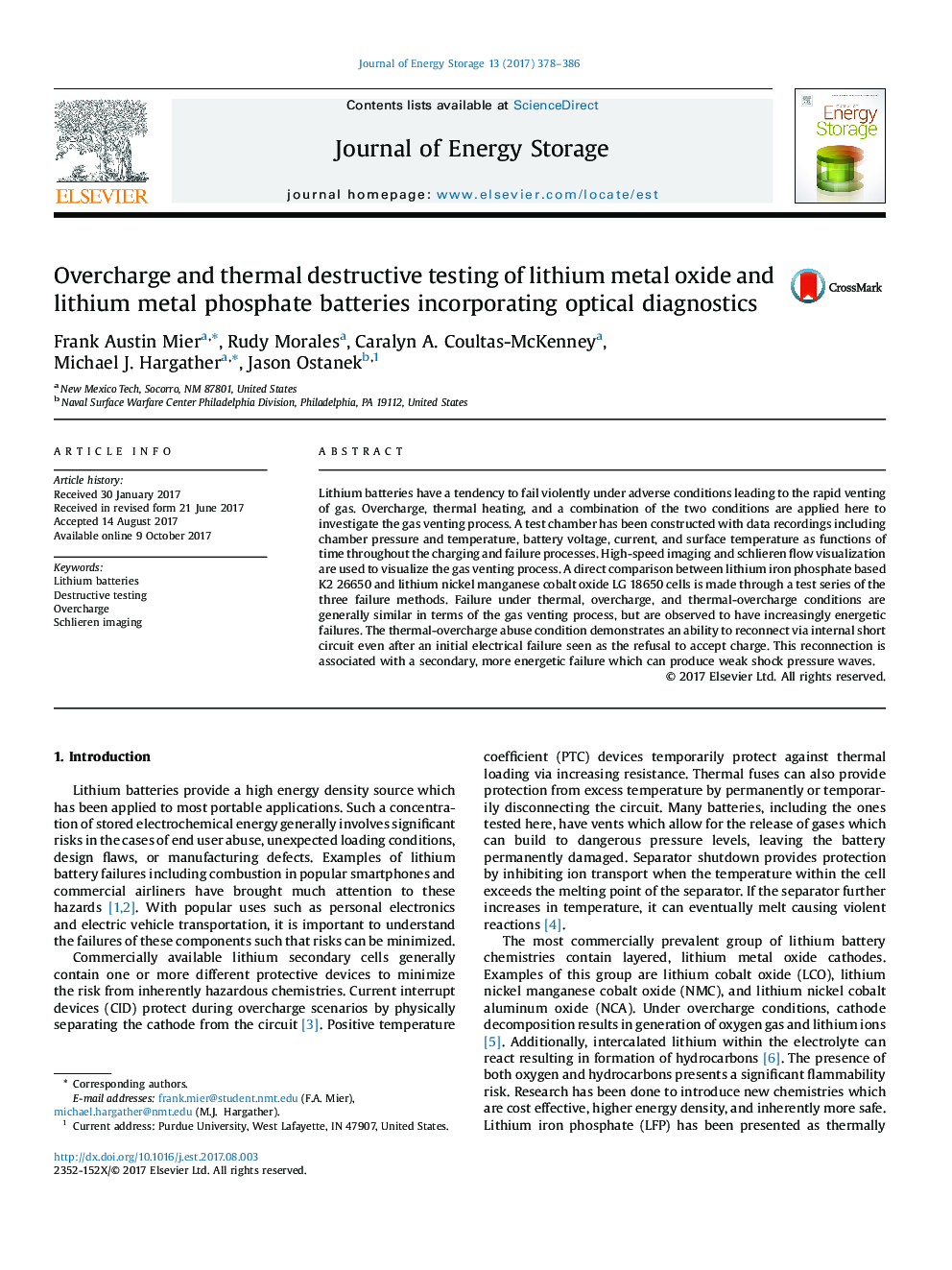| Article ID | Journal | Published Year | Pages | File Type |
|---|---|---|---|---|
| 5127350 | Journal of Energy Storage | 2017 | 9 Pages |
â¢Imaging, including schlieren, show external features of battery abuse failures.â¢Venting spray forms in two regions: radially outwards and axial to the cell.â¢Thermal loading/overcharge combination are more energetic than either alone.â¢Reconnection (via internal short) in combination abuse leads to secondary failure.â¢Weak shock waves were seen in tests of K2 26650 lithium iron phosphate cells.
Lithium batteries have a tendency to fail violently under adverse conditions leading to the rapid venting of gas. Overcharge, thermal heating, and a combination of the two conditions are applied here to investigate the gas venting process. A test chamber has been constructed with data recordings including chamber pressure and temperature, battery voltage, current, and surface temperature as functions of time throughout the charging and failure processes. High-speed imaging and schlieren flow visualization are used to visualize the gas venting process. A direct comparison between lithium iron phosphate based K2 26650 and lithium nickel manganese cobalt oxide LG 18650 cells is made through a test series of the three failure methods. Failure under thermal, overcharge, and thermal-overcharge conditions are generally similar in terms of the gas venting process, but are observed to have increasingly energetic failures. The thermal-overcharge abuse condition demonstrates an ability to reconnect via internal short circuit even after an initial electrical failure seen as the refusal to accept charge. This reconnection is associated with a secondary, more energetic failure which can produce weak shock pressure waves.
